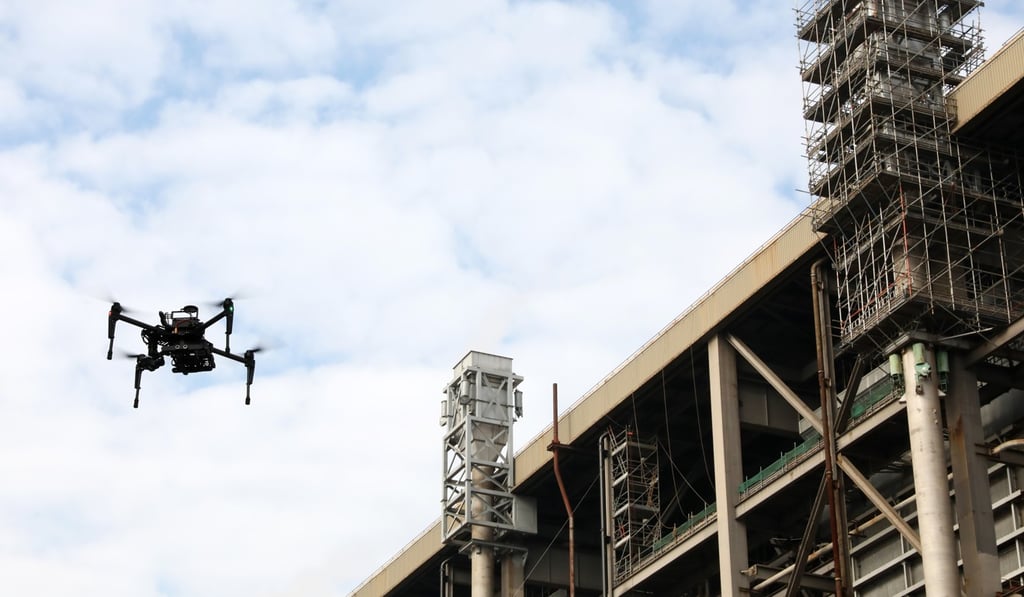How Hong Kong electricity company CLP is saving millions of dollars, and potentially lives, with HK$80,000 drones at Tuen Mun’s Castle Peak Power Station
- Using drones has helped firm slash maintenance and inspection costs by forgoing the need to send humans to do potentially perilous tasks
- But operators must qualify in pilot competency with the Civil Aviation Department, as any drone weighing more than 7kg is classed as an aircraft

Vincent Yan Kwok-hung’s childhood dream was to fly planes. Things did not quite work out the way he had imagined – he is now an engineer at power utility CLP – but he takes comfort in the fact he has made it halfway – with drones.
Yan is one of three members of the company’s fledgling drone pilot team, formed ad hoc two years ago and now tasked with carrying out all aerial monitoring of facilities at its sprawling Castle Peak Power Station.
It is no cakewalk – the job involves piloting HK$80,000 (US$10,200) drones up the sides and down the power plant’s 250-metre-high concrete chimneys, and sometimes into boilers to check for wear and tear. Windy conditions and prowling birds of prey bring extra challenges.

“I worked at the airport for a while, always loved aviation and grew up wanting to be a pilot,” he said. “I guess this is the next best thing.”
Yan is one of the few hundred people in Hong Kong certified by the Civil Aviation Department to pilot drones for non-recreational purposes – a requirement most of the public are unaware of.